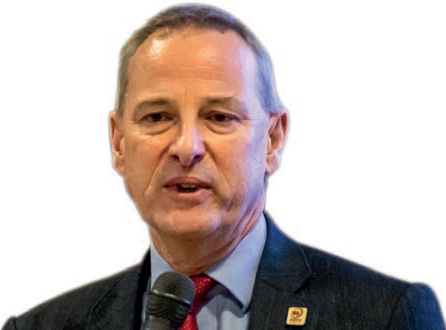Working to boost African tropical forest certification
3 December 2020It’s time for new impetus for certification of tropical forests, and PEFC – with a diverse coalition of stakeholders – is making great strides towards this goal, writes PEFC International chairman Peter Latham OBE
The loss of tropical forests was high on the agenda of the 1992 Earth Summit, but governments failed to conclude a legally binding agreement on the issue. Yet it gave raise to something potentially more important: the insight that deforestation cannot be tackled in isolation, but needs to be part of an holistic, global effort to promote sustainable forest management (SFM). As a result, the concept of “criteria and indicators for SFM” became more widely accepted, and eventually led to Pan-European criteria and indicators for SFM (MCPFE) and criteria for sustainable management of tropical forests (ATO/ITTO).
Forest certification systems also trace their roots back to the 1992 Earth Summit and its concerns for tropical forests. However, certification took hold mainly in temperate forests, especially after PEFC was created, with still only 10% of all certified forests located in the tropics.
Temperate forests are in regions where forest governance systems were well established, forest rights largely well defined, and where owners already benefitted from a long history of sustainable forest management and established forest sector organisations and networks.
PEFC, which requires a ‘bottom-up’ approach, with participation of affected and interested stakeholders at local level, can build on such structures. However, in countries with less established governance structures, although more successful and long-lasting than top down approaches, this is more difficult to achieve.
The first tropical country that achieved PEFC endorsement was Malaysia in 2009. Today, Brazil, Indonesia, French Guiana, Gabon and Cameroon also benefit from PEFC-endorsed national forest certification systems, with efforts under way in Ghana, Guyana, Myanmar and the Republic of Congo.
But, with still less than 10% of all certified forest being in the tropics, more efforts are required to expand sustainable forest management in the region. This is why Cameroon, Congo and Gabon have joined forces to form ‘PAFC Congo Basin’, a collaboration which it is hoped the Democratic Republic of Congo and Central African Republic will also join.
Shared language, same forest type and similar forest legislation in the neighbouring countries, make this unprecedented regional system development feasible. In the future it would substitute existing national systems, while expanding the availability of PEFC certification to all participating countries.
Led by ATIBT (the International Tropical Timber Technical Association) and supported by Olam International, the project has received funding from PPECF (the Programme for the Promotion of Certified Forest Management), a joint programme of KFW, the German Development Bank, and COMIFAC, the Commission of Forestry Ministers of Central Africa. The management of the system will be centralised and administered by a single regional co-ordinator, increasing efficiency in implementation and facilitating external communication and outreach.
Crucially, the support of local stakeholders for this regional approach will enable PAFC Congo Basin to obtain widespread support and buy-in, giving forest certification of tropical forests in Africa much needed momentum. We invite all stakeholders to join this collaborative effort.
